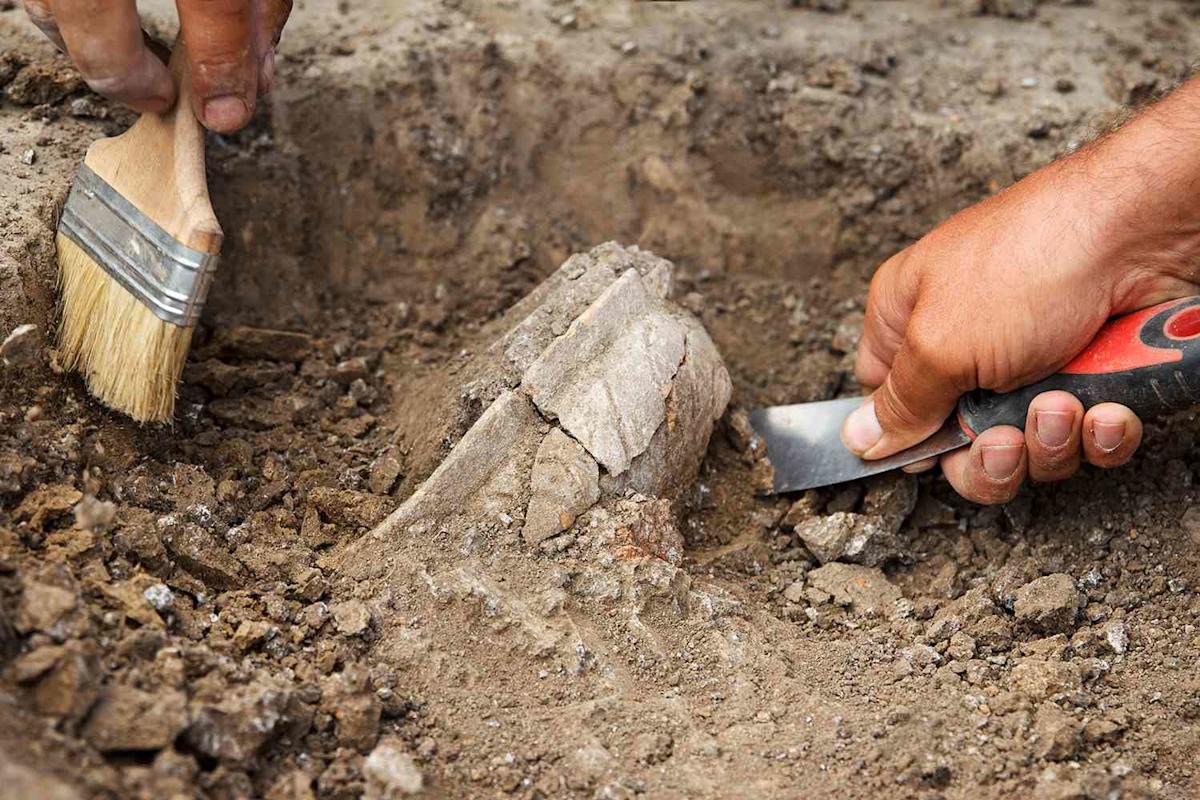An unprecedented archaeological find has come to light in the waters off the Turkish coast. Hundreds of tableware dating back more than 2,000 years and in perfect condition have been recovered from the wreck of a merchant ship off the coast of Adrasan, in the province of Antalya. This shipwreck, whose cargo consisted exclusively of pieces of pottery known as Eastern Sigillata A (ESA), offers new clues about maritime trade between East and West during the period between the end of the Hellenistic period and the beginning of the Roman Empire.
A unique shipwreck
The find was documented during underwater archaeological prospecting campaigns carried out by Akdeniz University in September 2022, with permission from the Turkish Ministry of Culture. The wreck is located at a depth of between 38 and 46 metres, in an area prohibited for recreational activities. This absence of human activity in the area has contributed to its exceptional state of preservation.
The vessel lies on a seabed composed of sand and stone, with remains of its cargo scattered both on the surface and under the sediment. Unlike other wrecks found in the region, this ship was carrying exclusively fine red ESA-type pottery, with no trace of other objects or elements of the hull. This specialisation in cargo makes the wreck an unusual case, which makes it even more valuable for scientific research.
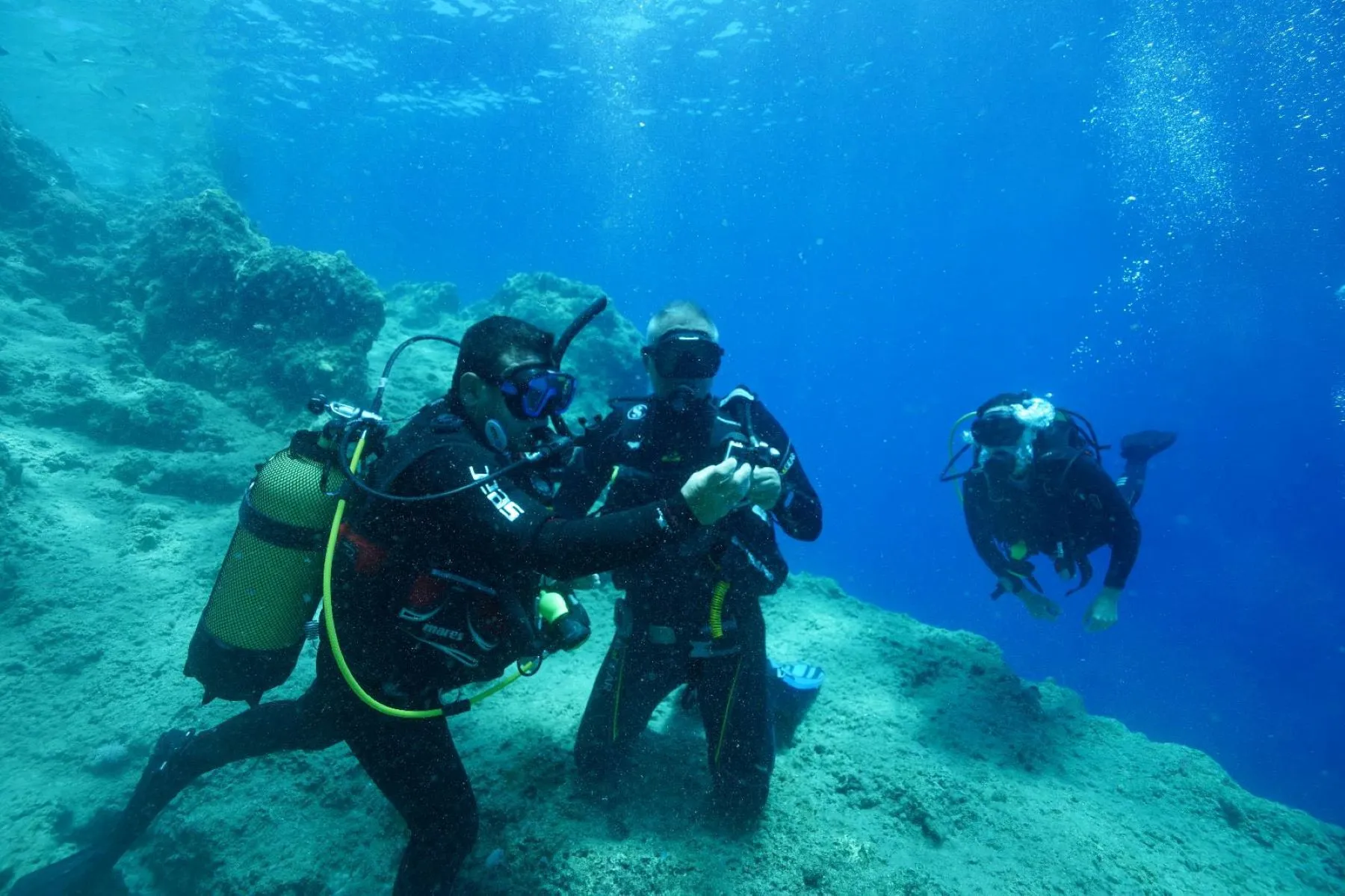
Eastern Sigillata A pottery: an example of standardised luxury
Eastern Sigillata A refers to a type of high-quality pottery, identifiable by its bright red polished surface and its manufacture using moulds. Emerging in the 2nd century BC, this type of tableware was a luxury product that imitated the shapes and finishes of silver. It was widely distributed throughout the eastern Mediterranean. Areas in Syria, Palestine, Cyprus and southern Turkey have been suggested as the main production centres for these pieces.
The pieces recovered from the Adrasan shipwreck have been dated to between the 2nd century BC and the 1st century AD and correspond to different types already identified in other archaeological sites in the eastern Mediterranean. All in all, this collection has become an archaeological rarity, as it is a cargo consisting exclusively of eastern sigillata A.
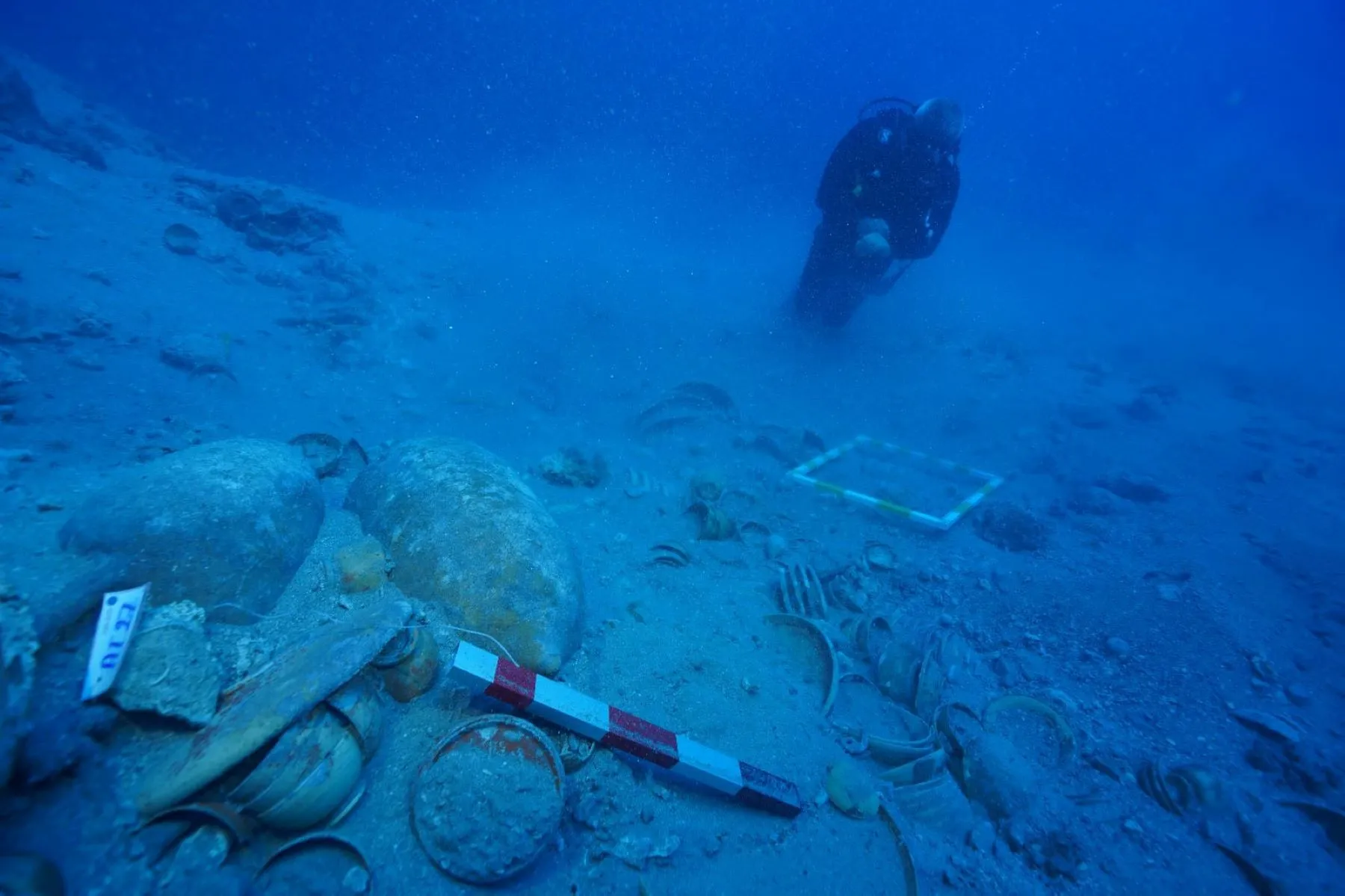
A history of shipwrecks
Researchers believe that the ship, probably of Eastern origin, was sailing westward as part of the Mediterranean maritime trade routes. The main hypothesis suggests that the ship may have been trying to take shelter from a storm when it struck hidden shoals. The accident caused the ship to sink about 300 metres from the coast. In fact, two other wrecks have been found in the same rocky area, one loaded with amphorae and the other with bricks, proving that the area was a real danger to navigation.
Documentation and study of the site
Although the wreck was initially discovered in 2007 by the owner of a local diving club, it was not until 2022 that a comprehensive study was carried out. During these campaigns, and thanks to the 67 dives carried out by 15 researchers aboard the scientific vessel Arkeo, photogrammetry techniques were used to record the wreck in detail. In addition, 20 representative samples of the tableware were extracted, which, after being drawn and photographed, were returned to their original location.
The ceramic forms found have been classified according to John Hayes’ typology. Thus, plates of Hayes types 3, 4 and 9 were identified, as well as bowls of types Hayes 5, 22 and 24. The predominance of plates over bowls reinforces the idea of specialised production aimed at high-end domestic consumption.
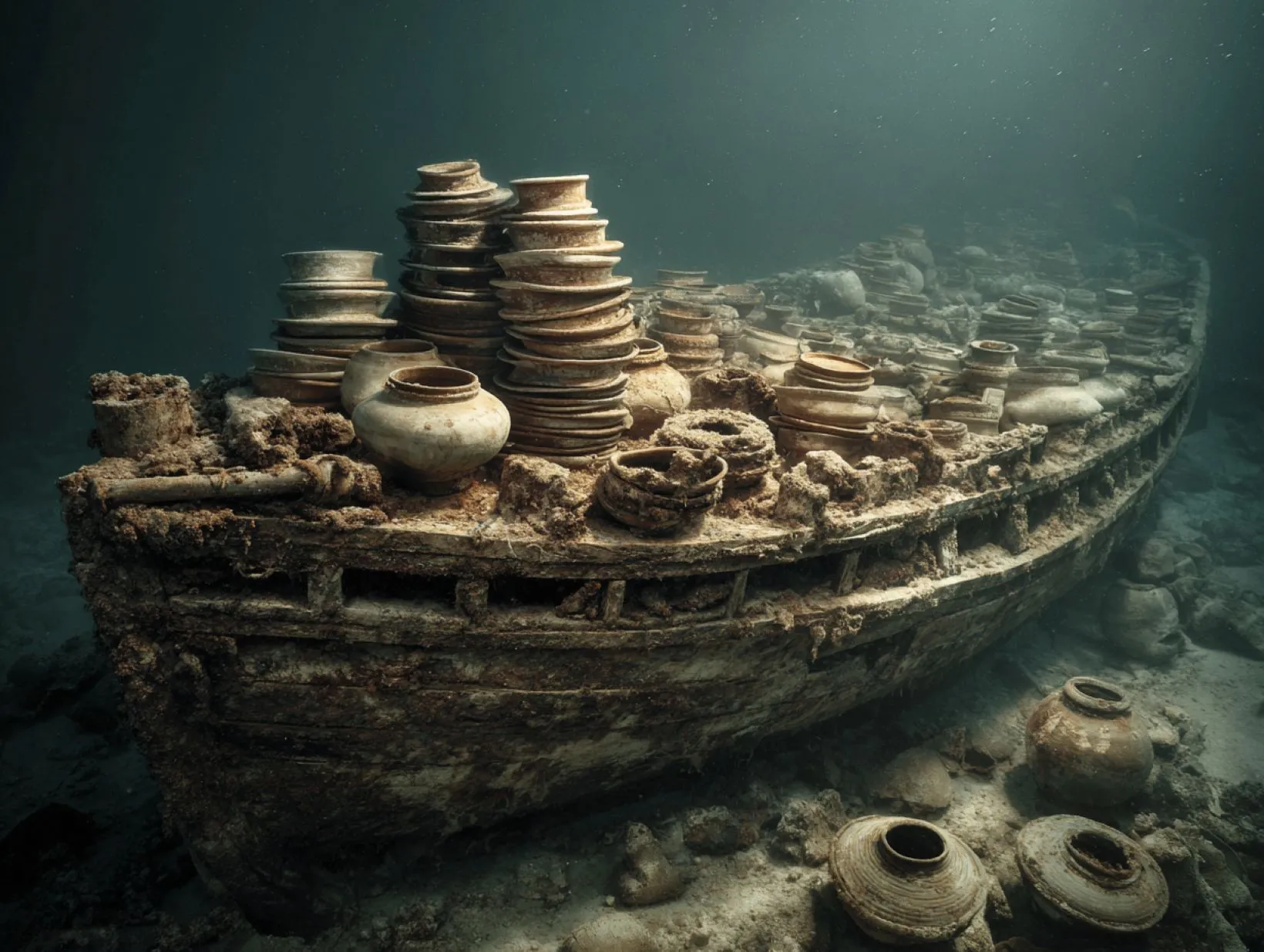
Representative pieces: luxury tableware
Among the most notable objects are several Hayes 3 type plates, characterised by a wide rim, a narrow base and a curved or straight body, with a red or reddish-brown finish. This type was common on the Mediterranean coast of Anatolia and in regions such as the city of Andriake.
Plates of the Hayes 4 type were also recovered, with decorations printed in the centre including palmettes, Isis crowns and rosettes, motifs commonly found on prestigious tableware. Another of the most unique pieces (a large plate of the Hayes 9 type) has a diameter of 54 cm and Ionic decorations, probably inspired by metal prototypes.
The bowls include Hayes 22 type bowls, which are hemispherical in shape with thin walls, and Hayes 5A and 5B type bowls, which are high-quality pieces with reliefs or very careful finishes. In addition, a moulded bowl with floral relief decoration, of the Hayes 24 type, was also documented, evidence of the continuation of Hellenistic forms adapted to the new Roman taste.
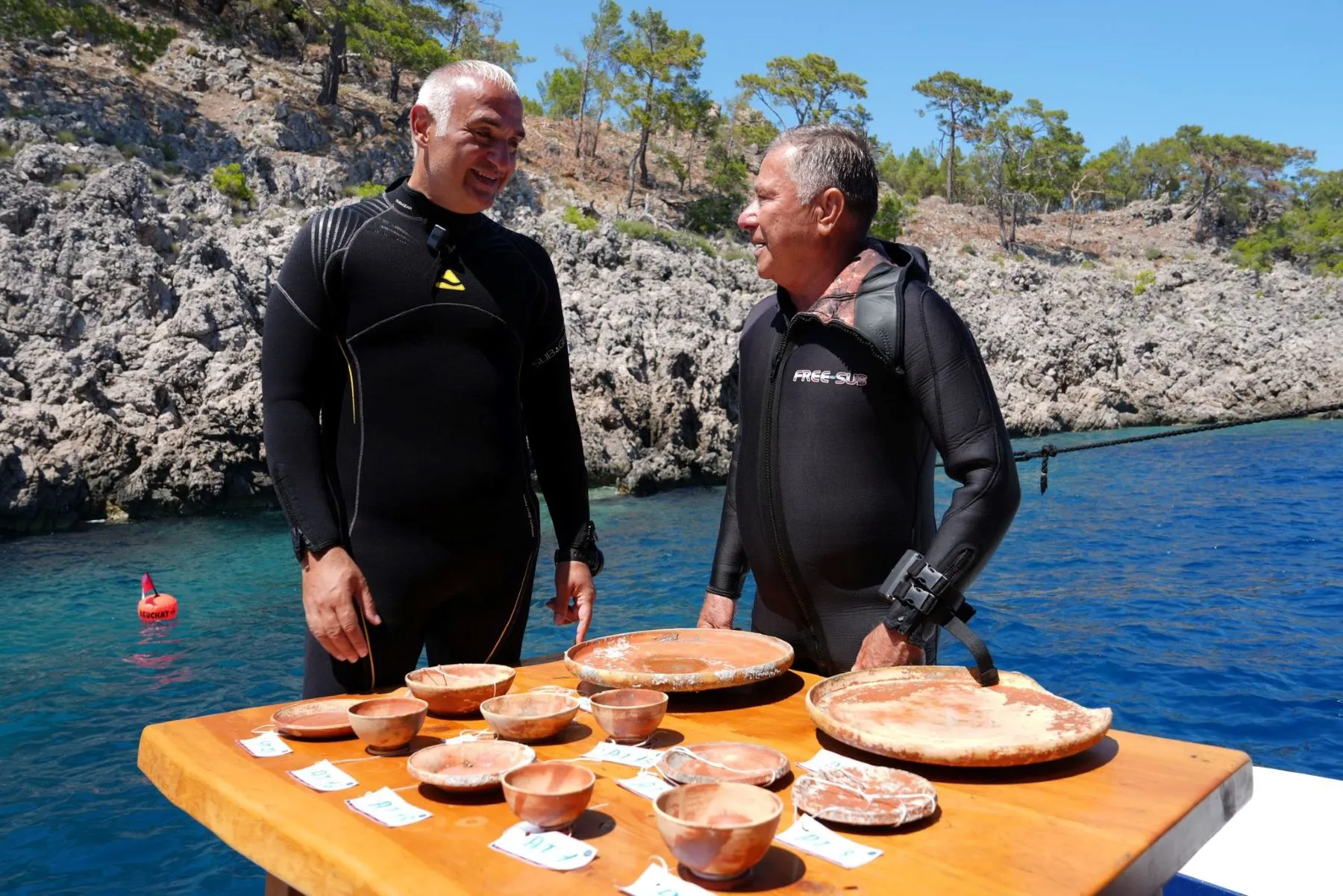
A gateway to Mediterranean trade
The Adrasan wreck seems to confirm that ESA pottery was one of the main manufactured goods transported by sea during the final centuries of the Hellenistic world and the early Roman Empire. The uniformity of the cargo suggests that these pieces were destined for a single market or redistribution point, perhaps located in the western Mediterranean. The absence of remains of the hull or anchor indicates either that the vessel was destroyed or that its organic parts disintegrated over time.
Future prospects
Although a full excavation is not planned at this stage, the data obtained so far have already broadened our knowledge of the distribution and chronology of Eastern Sigillata A. The Adrasan wreck provides direct evidence of the role played by merchant ships in the circulation of luxury manufactured goods and offers a tangible example of pan-Mediterranean trade prior to the consolidation of the Roman Empire.

